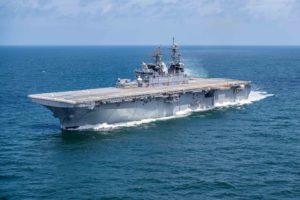
Last week a Navy official said an ongoing study on the future amphibious ship force structure is due to be complete in March. The study “will evaluate what our requirement and the way of quantities for amphibs will be going forward into the future,” Capt. Cedric McNeal, program manager for the Amphibious Warfare Program Office, said during a Naval Sea Systems Command briefing at the annual Surface Navy Association’s symposium on Jan. 12. “That study is planned to complete toward…

 By
By 











